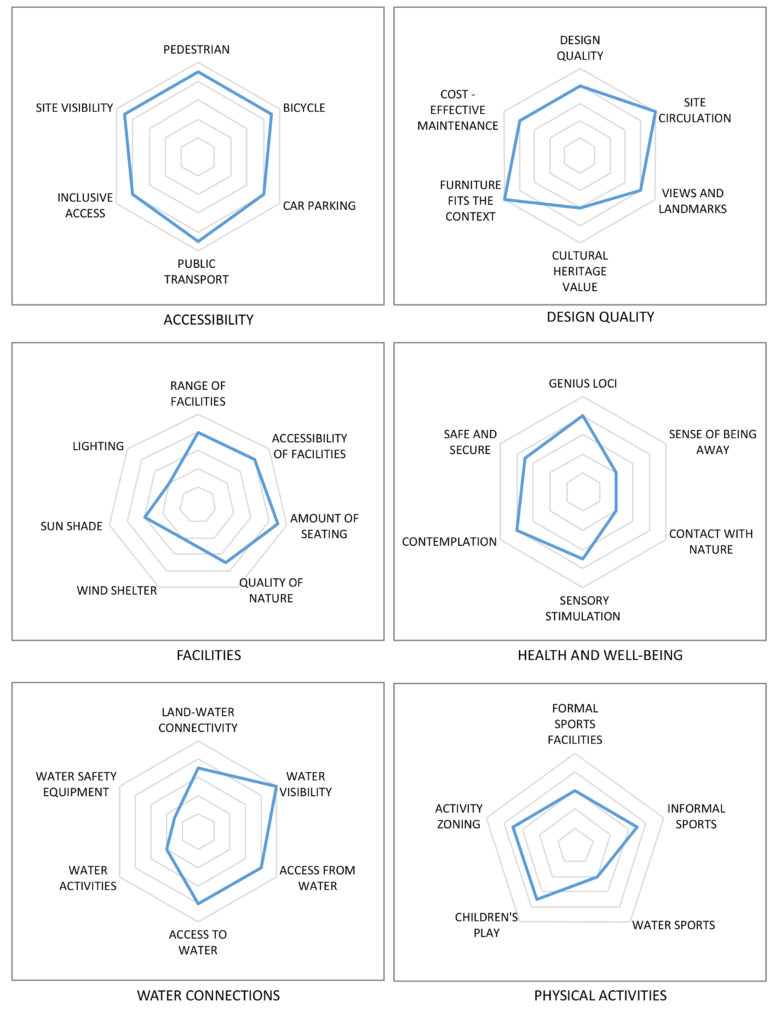
Architect
Sasaki Associates
Type of Area
Large river with artificial banks
Land/water interaction
Harbour
Promenade
Terraces/steps
Built Environment Types
Completely built
Scale of Impact
Block
District/neighbourhood
City
Intervention Scale (Spatial)
Linear development- multiple interventions
Project Types
Riverfront development
Economic regeneration
Cultural regeneration
Urban/ Rural
Inner urban areas
Visibility and Openness
Visible
Improving connectivity in the city
Since the 1990s, busy roads have been reconfigured by the Chicago Department of Transportation to allow greater public access to the river. On the basis of this road reconstruction project, the city worked on the development plan for the Chicago Riverwalk. The construction started in 2001 and was developed by Skidmore, Owings and Merrill. The architects planned four separate sections, each with a specific location and theme. The sections started off at the Confluence as a spatial expansion into the river for more public space and pedestrian access This was followed by the Arcade with a more architectural appearance, separating the riverfront from the road. The Civic includes a museum and is the focal point for boat launches, while the Market focuses on connecting gastronomy and apartments to the Riverwalk.
The resulting Chicago Riverwalk is a connected pedestrian waterfront. It contains promenades, seating, restaurants, boat rentals and further activities at the river’s edge. While the Chicago River was once a busy industrial shipping channel, it is now one of Chicago’s main attractions and understood as a second “shoreline” to Lake Michigan. The Chicago Riverwalk was not realised in one project, the different sections were added step-by-step and have enhanced contemporary opportunities for recreation, while merging the new recreational spaces in the city. Each section has a different design and purpose and accommodates activities from dining to fishing, along with their commercial and recreational amenities. It allows people to get closer to the river and actually embrace it as part of big city life.
The first phase was completed in 2009 and in 2012 Sasaki and Ross Barney Architects designed an expansion to link six more sections to the Riverwalk. Essentially these were in a sense a series of rooms, which connected more of the river to the city with floating gardens and piers for more recreational options. These six final new sections were officially opened in 2015 and 2016. The Marina Plaza presents further gastronomy and outdoor seating, while the Cove provides access for docking of individual boats and the River Theatre links road and river with shaded stairs and seating. A levelled fountain forms the Water Plaza features, whereas Jetty features wetland gardens, which also raises the awareness of river ecology in an interactive learning environment. Finally, the Boardwalk forms an accessible walkway with a vast lawn area.
Chicago is planning further extensions of the Riverwalk, while the oldest section will see improvements following contemporary affordances. The programmes and forms for each section allow for diverse experiences at and on the river. These experiences trigger public social life at the core of the city by removing traffic barriers next to the water edge and encouraging direct contact with the river edge while being less exposed to traffic noise. The design provides both continuity and variety for a visitor with materials, details and repeated forms that provide a visual unity along the subsequent sections of the Riverwalk.
Perception and Meaning
Imageability
Accessibility
Sense of place
Health and Wellbeing
Place affordance
Increased physical activities
Increased socialisation
Interaction with Water
Visual
Tactile – touching

This project is excellent for accessibility and overall design, except for values of cultural heritage. The project has little lighting and is rather exposed to sun and wind, but it is rated highly for most other aspects of facilities. Health and well-being potential is generally quite high but rated lower for being away as it is an artificial urban environment, and there is no contact with nature.
Water accessibility also performs very well apart from the range of possible activities in or on the water as well as the fact that water safety equipment is not very evident. There is quite a lot of space for physical activity and children’s play, but of course not offering water sports in the centre.
It is a versatile project making good use of the limited space in a very urban context.Good access to the project is provided for most users by most means of transport. The extended area of the project with its comprehensive design approach offers an overall high and original design quality, which also considers the facilities.
